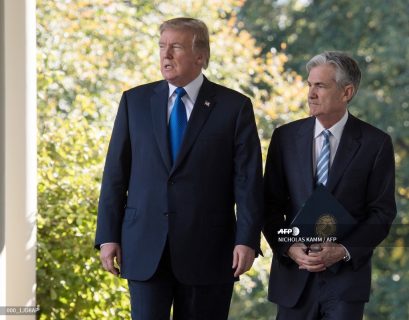
By Antonio RODRIGUEZ / Vanessa CARRONNIER
Agence France-Presse
PARIS, FRANCE (AFP) — Longstanding warnings from economists of global spillover from the US-China trade war appear to be materialising, with a trio of central banks springing surprise rate cuts on Wednesday and bond markets in retreat.
The bold monetary policy moves in India, New Zealand and Thailand came as industrial production in European powerhouse Germany fell back in June, adding to uncertainty in the eurozone compounded by the trade war.
US President Donald Trump has threatened to slap additional tariffs on Chinese imports, and China has now let its yuan currency fall through 7.0 against the dollar.
Trump, in a series of outbursts on Twitter, has demanded the Fed reply in kind even after the US central bank staged its first rate cut in a decade last week.
“‘Three more Central Banks cut rates.’ Our problem is not China…” he tweeted, attacking the Fed anew.
The Trump administration accuses Beijing of foreign exchange manipulation, fuelling fears of a currency war in addition to the trade battles.
Yields on the benchmark US Treasury and German government bonds have been charting record lows in response, suggesting trouble ahead.
The price of gold, another asset like government bonds that is seen as a safe haven, rose above $1,500 per ounce for the first time since 2013.
“(Interest) Rates falling everywhere,” analysts at Moneycorp wrote.
“They may not exactly be competing but the world’s central banks all seem to be pointing in the same direction towards lower rates. In every case there is concern, to a greater or lesser degree, about the global economy.”
– Hit to confidence –
Second-quarter Chinese growth was already the weakest in three decades and the slowdown in Europe is potentially worsened by the chaotic politics of Britain’s looming withdrawal from the European Union.
Markets had relaxed going into the northern hemisphere summer, hoping for a truce in the US-China confrontation after summit talks between Trump and President Xi Jinping in Japan in late June.
But now, Capital Economics said the deteriorating bilateral relationship “looks set to get even worse”.
The group’s chief emerging markets economist William Jackson said that “with the US and Chinese policymakers upping the ante, the indirect effects via a hit to confidence, tighter financial conditions and weaker investment risk becoming larger” to emerging markets (EM).
But he concluded that the impact on those markets from the supply chain was probably manageable, and so “the net effect on EM exports is unlikely to be very large”.
– Run for the hills? –
Philippe Waechter, research director at Ostrum Asset Management, said Trump’s actions had “increased the risk of deterioration or rupture, but we are not yet at the ‘head for the hills’ point'”.
“The global economy is slowing but we are not at the breaking point yet,” he said.
Other observers, however, are sounding the alarm bell ever louder.
In late July, the International Monetary Fund revised its 2019 global growth forecast lower to 3.2 percent.
IMF chief economist Gita Gopinath noted that “tensions could flare up again and play out in other areas (such as the auto industry) with large disruptions to global supply chains.”
Rajiv Biswas of the IHS Markit group told AFP: “We are in a very dangerous environment for world trade.”
If import prices continue to go up and currency devaluations hamper consumption, the United States could suffer blowback from Trump’s trade battles.
“The US economy is probably in a weaker state than we imagine,” Waechter said.
The US economy, which has witnessed an exceptionally long period of growth, is flagging with job creation and exports both down.
The Federal Reserve cut its headline interest rate last week for the first time in 11 years, noting in the words of Fed chief Jerome Powell “downside risks from weak global growth and trade policy uncertainty”.
But the Fed has made it clear that it cannot accede to Trump’s strident demands to respond to China’s currency “manipulation”.
In an interview with AFP on Tuesday, Fed policy board member James Bullard said “we can’t realistically move monetary policy in a tit-for-tat trade war”.
If the trade war worsens, central banks might find themselves without effective ways of dealing with it, Waechter warned.
“They don’t have much more room for manoeuvre,” he said.
In India, the reserve bank cut its main repo rate by a bigger-than-expected 35 basis points, arguing: “Domestic economic activity continues to be weak, with the global slowdown and escalating trade tensions posing downside risks.”
© Agence France-Presse
